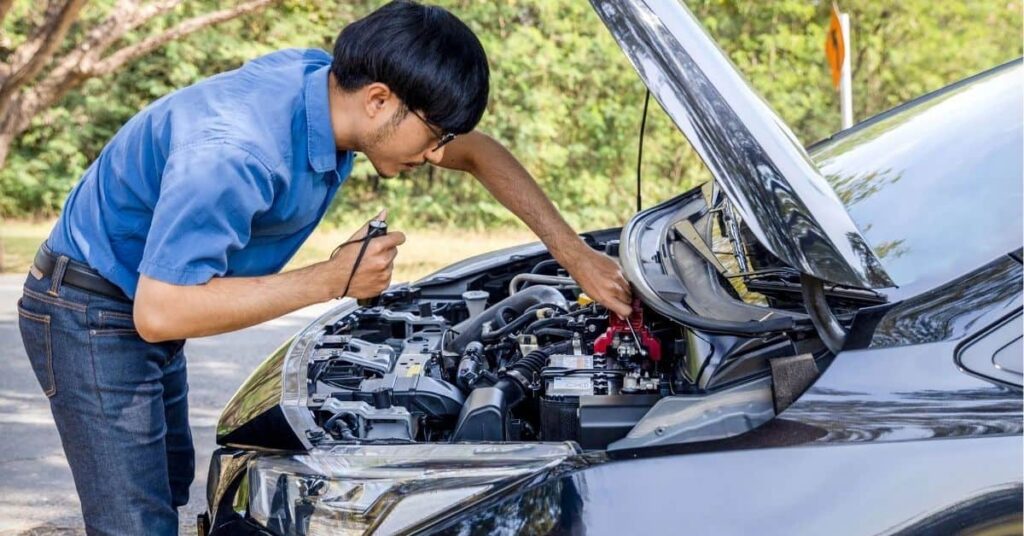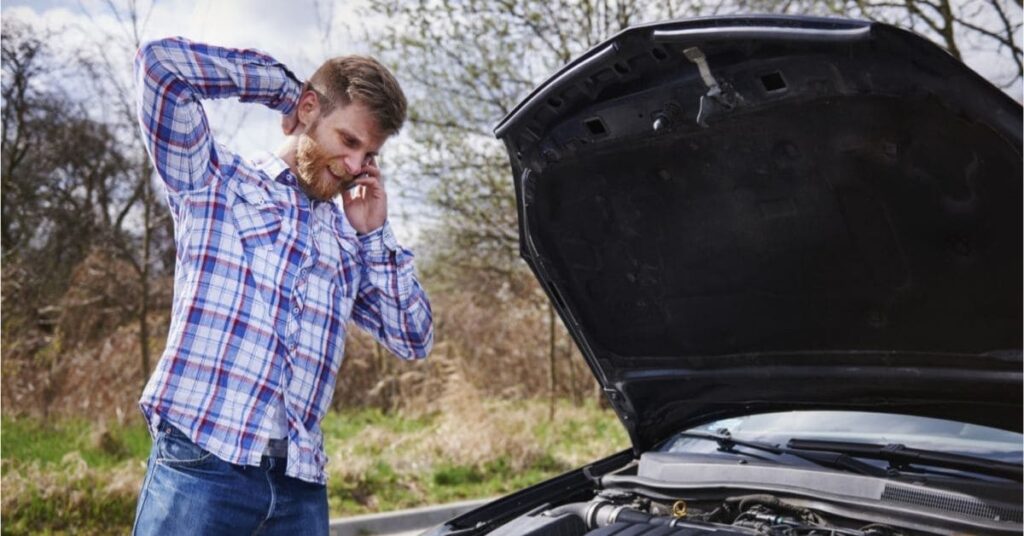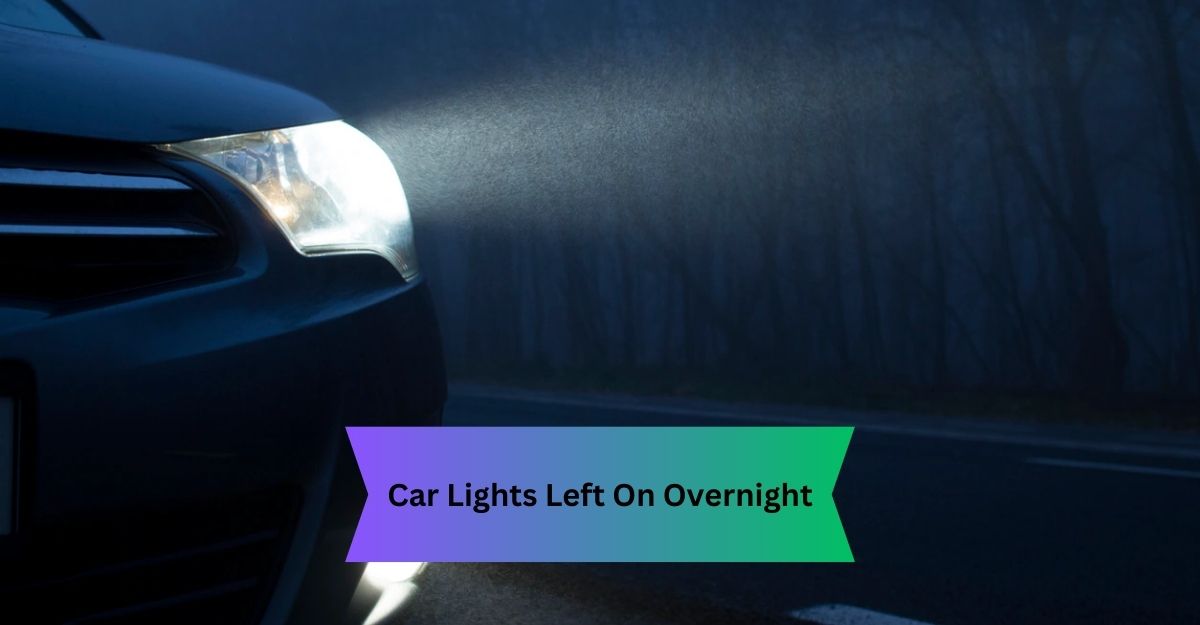Leaving your lights on overnight drains the car battery, preventing it from starting. To fix it, try jump-starting the car using jumper cables and a second vehicle. If that doesn’t work, check for corrosion or damage on the battery or alternator. If needed, call a breakdown service for further help.
How Long Can You Leave the Lights On Before the Battery Dies?
Leaving your car lights on drains the battery, and how long it takes depends on the battery size. The table below shows how long different battery capacities can power the lights:
| Battery Capacity | Current Draw | Battery Life |
| 45 Ah | 1.67 amps | ~27 hours |
| 55 Ah | 1.67 amps | ~33 hours |
| 75 Ah | 1.67 amps | ~45 hours |
| 100 Ah | 1.67 amps | ~60 hours |
| 150 Ah | 1.67 amps | ~90 hours |
What to Do If Your Car Won’t Start After Leaving the Lights On:

If your car won’t start after leaving the lights on, the most likely cause is a dead battery. First, try jump-starting the car using jumper cables or a portable jump starter. If this doesn’t work, call a breakdown service, who can use a booster to start the car.
After starting, drive for at least 10 minutes to help recharge the battery. To avoid this problem in the future, always double-check your lights before leaving the car.
How to Jump-Start Your Car: Step-by-Step Guide
What You’ll Need:
- Jumper cables
- Another vehicle with a fully charged battery
Step-by-Step Guide:
1. Position the Cars:
- Park the working car close to the dead car, but don’t let them touch.
- Both cars should be turned off, with the keys out of the ignition.
2. Connect the Jumper Cables:
- Red (positive) cable: Attach one end of the red cable to the positive (+) terminal of the dead battery, and the other end to the positive (+) terminal of the charged battery.
- Black (negative) cable: Attach one end of the black cable to the negative (–) terminal of the charged battery. The other end should be connected to a clean, unpainted metal surface on the dead car, such as a bolt or the engine block (avoid the negative terminal).
3. Start the Working Car:
Start the car with a good battery and let it run for a few minutes to charge the dead battery.
4. Start the Dead Car:
After a few minutes, try starting the dead car. If it doesn’t start, wait a little longer and try again.
5. Disconnect the Cables:
Once the dead car starts, carefully remove the cables in reverse order:
- First, remove the black cable from the metal part of the dead car.
- Then, remove the black cable from the negative terminal of the working car.
- Remove the red cable from the positive terminal of the working car.
- Finally, remove the red cable from the positive terminal of the dead car.
6. Let the Dead Car Run:
Let the car idle for at least 20 minutes to allow the battery to recharge. If the car won’t start after being turned off, it may require a new battery.
Tips:
- Check the battery terminals for corrosion before attaching the cables, and clean them if necessary.
- If the car doesn’t start after several attempts, the issue may be something more serious, like a faulty alternator.
What to Do If Jump-Starting Doesn’t Work:

If your car doesn’t start after attempting to jump-start it, there could be an issue beyond a dead battery. Here are some steps to take:
Check the Battery:
Examine the battery for any signs of damage, leaks, or corrosion on the terminals. If corrosion is present, remove it using a solution of baking soda and water.
Test the Alternator:
If jump-starting doesn’t resolve the issue, the problem could be a Malfunctioning alternator. The alternator charges the battery as the car operates, so if it’s defective, the battery won’t recharge. A mechanic can assess the alternator for you.
Try a New Battery:
If your battery is old (over 3-5 years) or showing signs of failure, it may need to be replaced. A mechanic or auto parts store can test your battery to confirm if it needs replacing.
Call a Tow Truck or Breakdown Service:
If you’re unable to diagnose or fix the issue, it’s best to call a professional breakdown service. They can assess the situation and tow your car to a garage for repairs if necessary.
Preventing Future Battery Drains: Tips to Keep Your Car in Check
To avoid future issues with a dead battery, here are some useful tips:
- Double-Check Your Lights: Always ensure your car’s lights (headlights, interior lights) are turned off before exiting the vehicle. You can also use a car alarm with a “lights off” reminder.
- Install a Battery Saver: Consider installing a battery saver or a light reminder system that automatically turns off your lights after a set period of time.
- Regularly Check Battery Health: Have your battery tested regularly, especially if it’s older. Many auto parts stores offer free battery checks.
- Avoid Short Trips: Frequently taking short trips can prevent your battery from fully charging. Try to drive your car for at least 20 minutes on longer trips to keep the battery charged.
- Keep the Battery Terminals Clean: Clean the battery terminals regularly to prevent corrosion. Use a mixture of baking soda and water to gently clean the terminals if you notice any buildup.
By following these tips, you can avoid draining your car battery in the future and extend its lifespan.
FAQs:
1. What happens if I leave my car lights on overnight?
Leaving your lights on overnight can drain the battery, preventing the car from starting. This happens because the battery is used to power the lights when the engine is off.
2. How long can you leave your car lights on before the battery dies?
Depending on your car’s battery and light type, leaving the lights on for 8-12 hours is enough to drain most car batteries.
3. How can I jump-start my car after leaving the lights on?
Use jumper cables and a second car with a charged battery. Connect the cables correctly, start the working car, and then try starting your own. Let the car run for 10-20 minutes afterward.
4. What should I do if jump-starting doesn’t work?
If jump-starting doesn’t work, check the battery for corrosion, test the alternator, or consider replacing the battery. You may need to call for a tow truck or breakdown service.
5. How can I ensure that my car battery doesn’t drain in the future?
Double-check your lights before leaving the car, install a battery saver, regularly check battery health, avoid short trips, and keep the battery terminals clean.
Conclusion:
Leaving your car lights on overnight can lead to a drained battery, leaving your car unable to start. Jump-starting may help, but if the problem persists, check the battery and alternator or call for professional assistance. Prevent future battery drains by ensuring the lights are off and maintaining your car’s electrical system.
